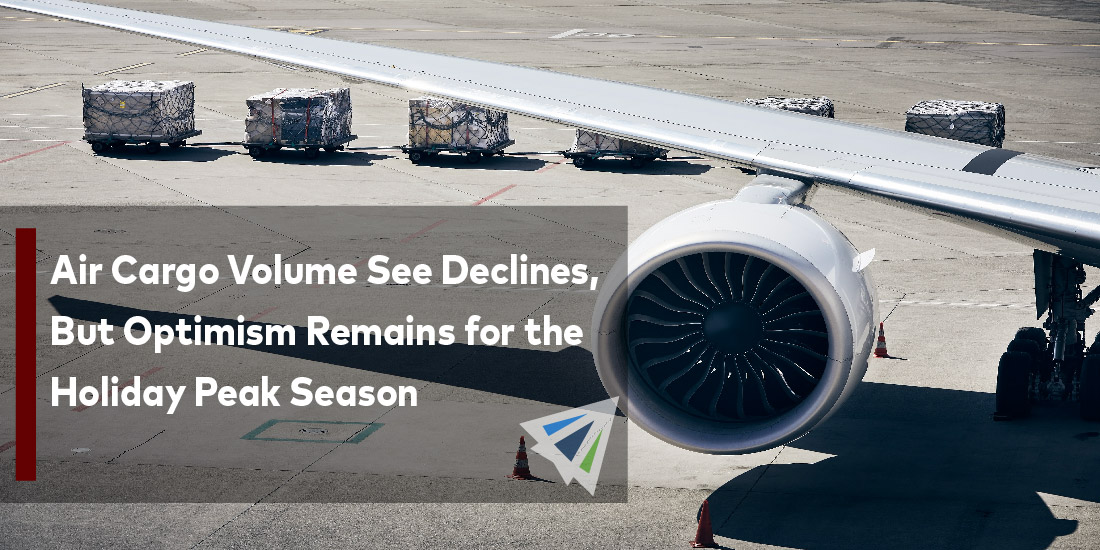Air Cargo Volume See Declines, But Optimism Remains for the Holiday Peak Season
August is traditionally thought of as the slowest month for air cargo activity. It’s before peak season and right after busy months of inventory stocking and exports from the U.S. However, despite air cargo activity dropping as expected, it didn’t drop as far as many analysts and industry experts expected it to, giving hope that this may be a good year by the time peak season rolls around.
In August 2022, air freight activity dropped five percent year over year and only four percent compared to pre-pandemic levels. In addition to this, as demand has dropped, so have freight rates. Demand dropped eight percent in June of this year, and nine percent in July which has had a major influence on cargo pricing.
Consumer expenditures have greatly reduced over the last couple months for a variety of reasons. Airport congestion has been at an all time high, deterring shippers from that mode temporarily. In addition, the rising cost of living and slowing global economic growth have had an impact on air shipping activity.
But the unexpected increase in air shipping activity last month can be attributed to a couple of factors. One of which that many experts and economists are pointing to is the increased strength of the U.S. dollar to the Euro, which has had a positive impact on European demand of U.S. products. As a result, there was more air export activity last month than previously expected.
Increased Capacity Reduces Price Volatility
One major shift seen over the last couple of months is that air freight rates have begun to stabilize a bit more – becoming more predictable and less volatile as they were previously. A major factor this is correlated to is the reintroduction of more wide-body passenger aircraft.
At this same time last year, passenger aircraft travel was at an all-time low amidst the ongoing COVID-19 pandemic. This had a direct impact on the air cargo industry, as a large majority of air cargo is shipped via the belly of passenger aircrafts. As the pandemic has slowed, more and more passengers are flying again which has increased the demand for more aircrafts, thus creating more capacity. This has had a positive impact on freight rates for shippers.
International passenger traffic has not reached its pre-pandemic levels in 2019, however, this year has been a major bounce back. In June, we saw a 60 percent rise in global passenger traffic, and it is currently three-fourths recovered to original 2019 levels. This number continues to climb, creating more capacity for cargo and leveling rates out all the more.
The last major factor contributing to an optimistic outlook on the freight activity in this upcoming holiday peak season is the lowered fuel prices. While they had spiked to unreasonably high prices in the last several months, these costs have begun to drop and it looks like they will continue to follow that trend in the coming months as well.
Looking Ahead
All these factors are pointing to the likelihood of a busy November air freight season as the capacity shift could see a return to a seller’s market. Also, the likelihood of a worker strike at the Port of Felixstowe in the U.K, as well as unresolved labor negotiations in U.S. west coast ports could have an impact on the increase in air freight activity later this year.
These unexpected shifts in the air freight industry could open previously unrealistic solutions to shippers who have avoided this mode of shipping for the last several years. If you’re curious about how these market shifts could impact your company and open opportunities to save money and increase the efficiency of your shipments, please don’t hesitate to reach out to one of our team members! We would love to help you and your team find a solution that works for you.
